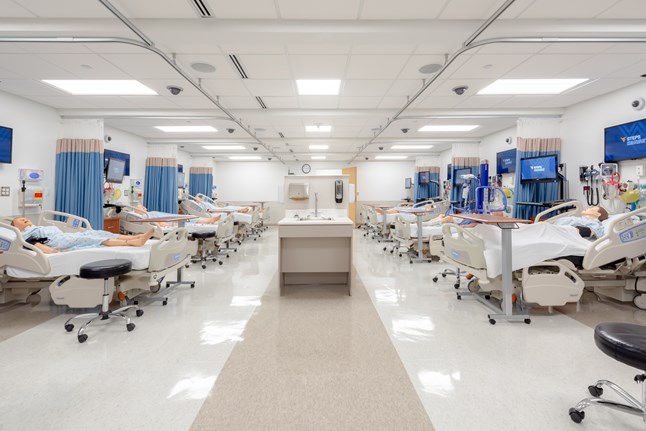Simulation
West Virginia University is home to the WV STEPS, David and JoAnn Shaw Center for Simulation Training and Education for Patient Safety, a 19,000 square foot simulation facility accredited by the Society for Simulation in Healthcare. The WV STEPS center is one of a handful of centers that are specifically accredited in assessment, research, systems integration, and teaching/education.
WV STEPS houses multiple high-fidelity simulation manikins capable of interacting with residents, responding in a physiologic manner to interventions, and serving as procedural models.

Highlights
Emergency Medicine utilizes the Simulation Center more than any other residency program at WVU
- Emergency medicine utilizes the simulation center more than any other residency program at WVU
- Residents participate in intimate, team, case-based sessions to bring the curriculum to life and expose learners to important pathology and opportunities, with a focus on bread and butter pathology, as well as more rare clinical presentations that are imperative for a well-rounded EM training.
- Scenarios aim to create functional realism—a concept whereby the actions you take in the scenario will influence the case in the same way they do in real life, all while being supported and mentored by dedicated simulation faculty in a safe learning environment.
- Incorporates interactive, real time ultrasound, as well as laboratory, ECG, and imaging findings
- Following each scenario, a non-judgmental debriefing focused upon teamwork, communication, and the current evidence and core content of EM related to the scenario
- Simulation lab also contains procedural task trainers
- Residency utilizes task trainers several times per year to practice procedures, such as central line placement, arterial line placement, direct and video laryngoscopy, and chest tube insertion